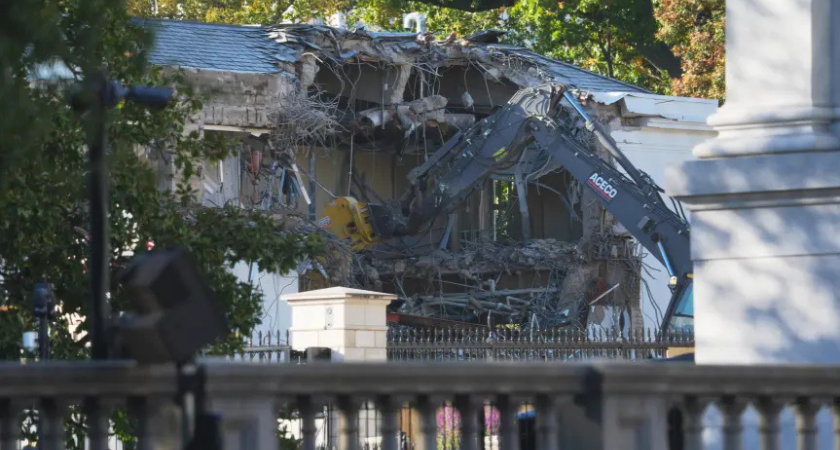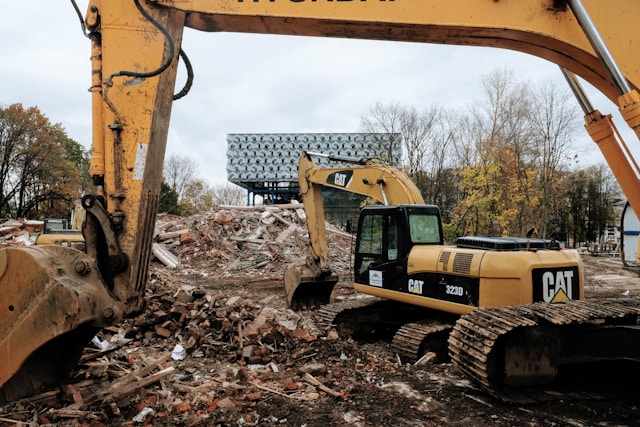
BOSTON — The demolition of the East Wing of the White House to make way for a new ballroom — part of President Donald Trump’s latest construction effort — is reigniting memories of a familiar political spectacle closer to home: former Massachusetts Governor Deval Patrick’s lavish $11 million renovation of his State House office.

While Trump’s new ballroom has already drawn national scrutiny, Patrick’s State House revamp, completed just before he left office, remains one of the most expensive and controversial office overhauls in state history — one that earned him the derisive nickname “Cadillac Deval.”
Patrick, who served two terms as governor, had ordered what was described as a “museum-quality” makeover, complete with marble countertops, facial recognition cameras, and an emergency situation room with six television screens, all financed by taxpayers. The project ultimately ran $2 million over budget, compounding earlier image problems from his tenure.
The criticism harked back to Patrick’s early days in office when he billed taxpayers for a $46,000 Cadillac Deville and $12,000 drapes — expenses that sparked outrage and became symbols of government excess.
“We really screwed up,” Patrick admitted at the time.
Patrick defended his decision to renovate the historic office, emphasizing that it was necessary for the long-term preservation of a space that had deteriorated over decades.
“It’s a living museum. We need to take care of it,” Patrick said.
The redesign sought to restore architectural authenticity, with historically accurate paint colors, moldings, and fixtures intended to reflect the original 18th-century design of the State House.
Democrats largely stood by Patrick during the controversy, and many later embarked on similar upgrades. Then-House Speaker Robert DeLeo led a $20 million renovation of the House chamber, while former Senate President William Bulger spent $160,000 — including $41,000 for a British carpet — to restore his office in 1988.
Now, years later, Trump’s $250 million privately funded ballroom has invited fresh criticism from Democrats, who accuse the former president of symbolic destruction by dismantling part of the East Wing.
“There’s no greater metaphor right now with what’s happening in this country than watching Donald Trump take a wrecking ball to the White House,” said former Biden Press Secretary Karine Jean-Pierre.
Former First Lady Hillary Clinton also joined in, writing on X:
“It’s not his house, it’s your house. And he’s destroying it.”

The White House, in turn, dismissed the backlash, framing the project as a continuation of presidential tradition and emphasizing that no taxpayer funds are being used.
“In the latest instance of manufactured outrage, unhinged leftists and their Fake News allies are clutching their pearls over President Donald J. Trump’s visionary addition of a grand, privately-funded ballroom to the White House – a bold, necessary addition that echoes the storied history of improvements and renovations from commanders-in-chief to keep the executive residence as a beacon of American excellence,” the White House said.
Trump also defended his decision by drawing comparisons to his predecessors, noting that Barack Obama added a basketball court and a kitchen garden, while Nancy Reagan spent $210,000 on a new set of White House china.
Even George H.W. Bush once joked about the expense, quipping that Reagan’s china “wasn’t much of an improvement.”
Still, the speed of the East Wing demolition, reportedly conducted without approval from historical boards, underscores Trump’s command of Washington bureaucracy — and contrasts sharply with Massachusetts’ notoriously slow and bureaucratic permitting process.
As columnist Joe Battenfeld noted, “On Beacon Hill, you can’t even put up a mailbox outside your house without getting permission from sixteen different historical societies.”
Both Trump’s and Patrick’s projects illustrate a shared political dilemma: the fine line between preserving history and projecting extravagance. In both cases, the optics of opulence have proven far more politically combustible than the projects themselves.
Originally reported by Joe Battenfeld in Boston Herald.